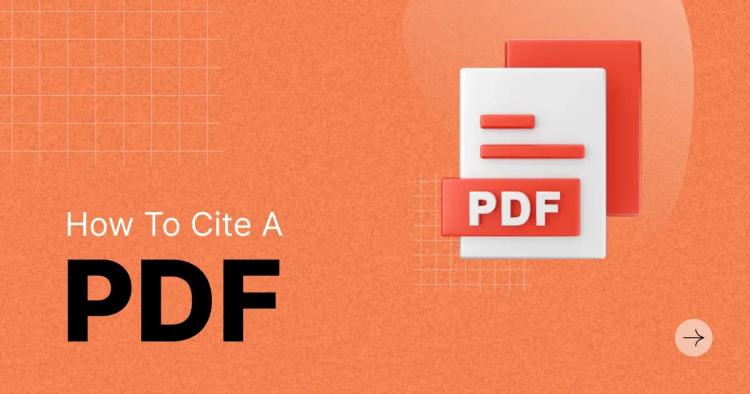Embarking on the scholarly journey of writing often involves navigating the labyrinth of citation styles, and when it comes to the intimate form of communication found in letters, precision is paramount. In the academic realm, proper citation is not merely a formality; it is a cornerstone of intellectual integrity, a way of honoring the voices that contribute to the rich tapestry of knowledge.
This comprehensive guide aims to unravel the intricacies of citing letters within the three predominant citation styles: APA, MLA, and Chicago.

From understanding the underlying philosophies of each style to navigating the nuances of in-text citations and crafting reference entries, this exploration delves into the art of acknowledging sources while providing a roadmap for academic writers seeking clarity and adherence to the conventions that define their respective fields.
ᴀᴅᴠᴇʀᴛɪsᴇᴍᴇɴᴛ
Understanding the Importance of Proper Citation
Proper citation serves as a beacon of intellectual honesty. It allows readers to trace the origins of ideas, verify claims, and engage with a broader academic dialogue. Neglecting citation is akin to building a house on an unstable foundation—without it, scholarly work loses its credibility and reliability.
The choice of citation style is akin to choosing the right tools for a craft. APA (American Psychological Association), MLA (Modern Language Association), and Chicago styles each have distinct rules, reflecting the diversity of academic disciplines and preferences.
How to Cite a Letter

Citing a letter requires a nuanced approach to ensure accurate acknowledgment of the source and adherence to the specific rules of the chosen citation style—be it APA, MLA, or Chicago.
In APA style, an in-text citation would typically include the author's last name and the publication year, while the reference entry should encompass the author's name, the date, and detailed information about the letter's title and location.
MLA style, on the other hand, employs a straightforward author-page number format for in-text citations, with the Works Cited entry requiring meticulous details such as the author's name, the title of the letter, and publication information.
Chicago style offers two primary documentation systems: author-date and notes and bibliography. For author-date citations, integrate the author and date into the text, while footnotes or endnotes in the notes and bibliography system provide a comprehensive citation with the necessary details.
Ultimately, mastering the art of citing letters involves a careful balance of understanding the specific rules of your chosen style and implementing them cohesively throughout your academic work.
APA Style for Citing Letters
The APA style, developed by psychologists for clarity and precision, offers a structured approach to citing letters.
Format for In-Text Citations in APA
In APA, in-text citations are concise and direct, providing readers with immediate information about the source. The author's last name and the publication year serve as signposts, guiding readers to the full reference at the end.
Example: According to Smith (2019), the significance of the letter lies in...
Creating a Reference Entry for a Letter in APA Style
Crafting a reference entry demands attention to detail. In APA style, the structure includes the author's name, the publication date, the title of the letter, and additional information about its location.
Example: Smith, J. (2019). The Art of Letter Writing. Letters Anthology, ed. A. Editor, City: Publisher.
ᴀᴅᴠᴇʀᴛɪsᴇᴍᴇɴᴛ
MLA Style for Citing Letters
The MLA style, often favored in humanities, emphasizes simplicity and clarity in citation.
MLA In-Text Citation Guidelines
MLA in-text citations convey essential information with the author's last name and the page number, guiding readers to the full citation on the Works Cited page.
Example: The power of the letter lies in its emotional resonance (Smith 42).
Crafting a Works Cited Entry for a Letter in MLA Style
Creating a Works Cited entry in MLA style involves meticulous attention to detail, encompassing the author's name, title of the letter, and publication details.
Example: Smith, John. "The Poetics of Epistles." Letters Quarterly, vol. 25, no. 3, 2018, pp. 40-58.
Chicago Style for Citing Letters
The Chicago style, known for its flexibility, offers two primary documentation systems—author-date and notes and bibliography. Chicago Author-Date Citations for Letters
In the author-date system, the emphasis is on integrating citation seamlessly into the text.
Example: (Smith 2017) argues that letters transcend mere communication...
ᴀᴅᴠᴇʀᴛɪsᴇᴍᴇɴᴛ
Footnote and Endnote Citations in Chicago Style
For those following the notes and bibliography system, Chicago style relies on footnotes or endnotes. These provide a treasure trove of information about the source.
Example: 1. John Smith, "The Elegance of Correspondence," Letters and Essays, ed. A. Editor (City: Publisher, 2017), 45.
Common Elements in Letter Citations

Regardless of citation style, certain elements form the foundation of a well-crafted citation for letters.
Author Information
Citing authors demands an understanding of individual and organizational names, handling multiple authors, and acknowledging institutions.
Example: Smith, John. University of Letters.
Date of the Letter
The date of a letter serves as a historical marker, requiring accurate formatting to align with each citation style.
Example: March 15, 2019.
Title and Description
Crafting a citation involves providing a clear title and a succinct description, allowing readers to navigate through a sea of sources.
Example: "A Letter to My Future Self: Reflections on Existence."
FAQs
Why is proper citation important in academic writing?
Proper citation is vital in academic writing as it not only gives due credit to the original authors, fostering a culture of intellectual honesty, but also allows readers to trace and verify the sources, ensuring the credibility and reliability of your work.
What are the key differences between APA, MLA, and Chicago styles?
APA, MLA, and Chicago styles vary in their rules for in-text citations, reference entries, and overall formatting. APA emphasizes author-date citations, MLA utilizes author-page numbers, while Chicago offers both author-date and notes and bibliography systems, allowing for flexibility in citation methods.
ᴀᴅᴠᴇʀᴛɪsᴇᴍᴇɴᴛ
Conclusion
As we conclude this extensive exploration, it's evident that citing letters in APA, MLA, and Chicago styles is a meticulous process, requiring an understanding of nuanced rules and attention to detail. In the dynamic landscape of academia, where precision meets creativity, mastering the art of citation ensures that your voice is not only heard but also resonates with clarity and integrity.
Related citation guides:







